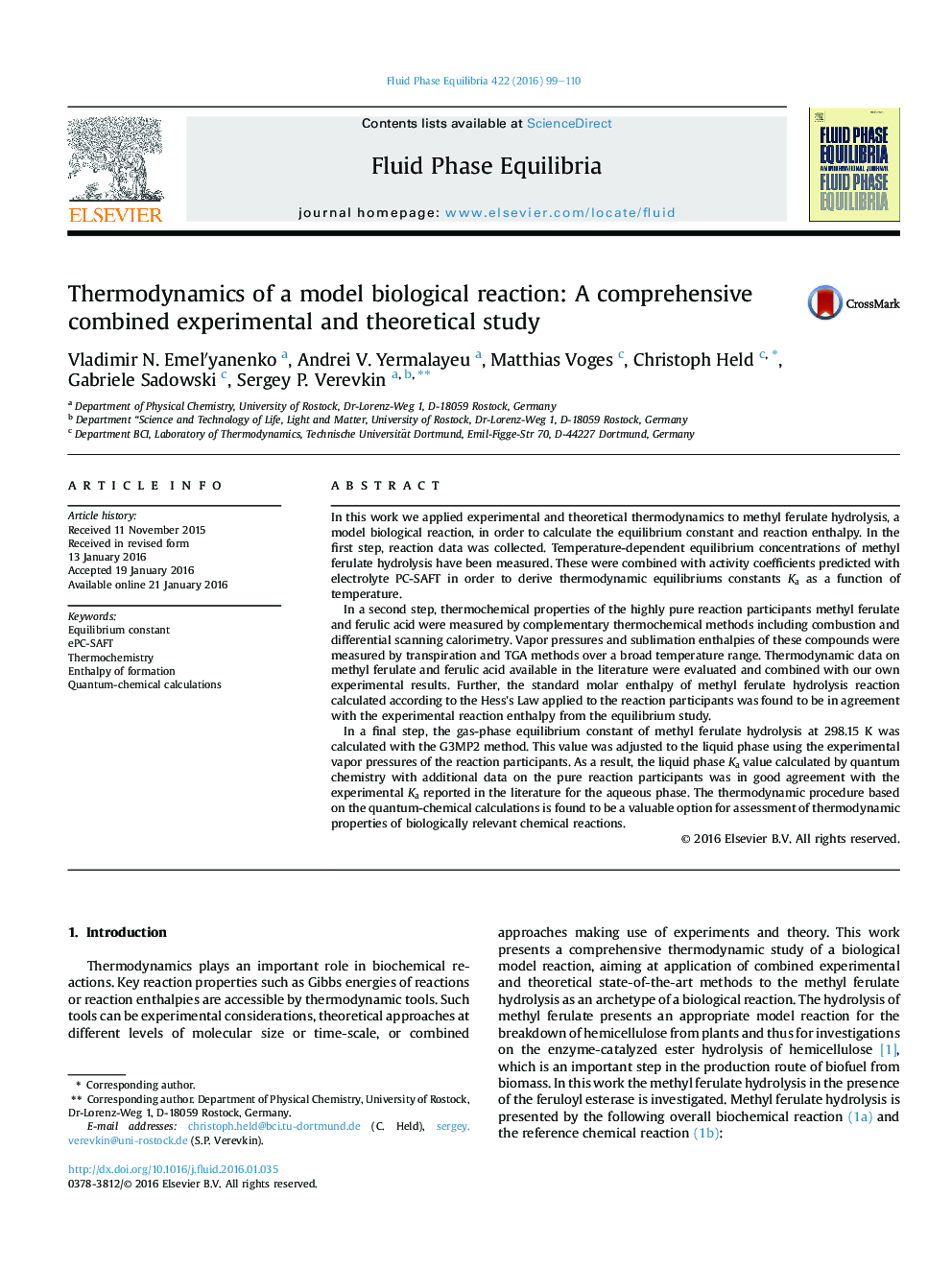| Article ID | Journal | Published Year | Pages | File Type |
|---|---|---|---|---|
| 201021 | Fluid Phase Equilibria | 2016 | 12 Pages |
•Equilibrium constants of methyl ferulate hydrolysis were measured at three temperatures.•Activity coefficients predicted with electrolyte PC-SAFT.•Thermochemical properties of methyl ferulate and ferulic acid were measured.•Reaction enthalpy was proved by using the Hess's Law and quantum chemistry.•Procedure to predict thermodynamics of biochemical reactions suggested and validated.
In this work we applied experimental and theoretical thermodynamics to methyl ferulate hydrolysis, a model biological reaction, in order to calculate the equilibrium constant and reaction enthalpy. In the first step, reaction data was collected. Temperature-dependent equilibrium concentrations of methyl ferulate hydrolysis have been measured. These were combined with activity coefficients predicted with electrolyte PC-SAFT in order to derive thermodynamic equilibriums constants Ka as a function of temperature.In a second step, thermochemical properties of the highly pure reaction participants methyl ferulate and ferulic acid were measured by complementary thermochemical methods including combustion and differential scanning calorimetry. Vapor pressures and sublimation enthalpies of these compounds were measured by transpiration and TGA methods over a broad temperature range. Thermodynamic data on methyl ferulate and ferulic acid available in the literature were evaluated and combined with our own experimental results. Further, the standard molar enthalpy of methyl ferulate hydrolysis reaction calculated according to the Hess's Law applied to the reaction participants was found to be in agreement with the experimental reaction enthalpy from the equilibrium study.In a final step, the gas-phase equilibrium constant of methyl ferulate hydrolysis at 298.15 K was calculated with the G3MP2 method. This value was adjusted to the liquid phase using the experimental vapor pressures of the reaction participants. As a result, the liquid phase Ka value calculated by quantum chemistry with additional data on the pure reaction participants was in good agreement with the experimental Ka reported in the literature for the aqueous phase. The thermodynamic procedure based on the quantum-chemical calculations is found to be a valuable option for assessment of thermodynamic properties of biologically relevant chemical reactions.
Graphical abstractFigure optionsDownload full-size imageDownload as PowerPoint slide
